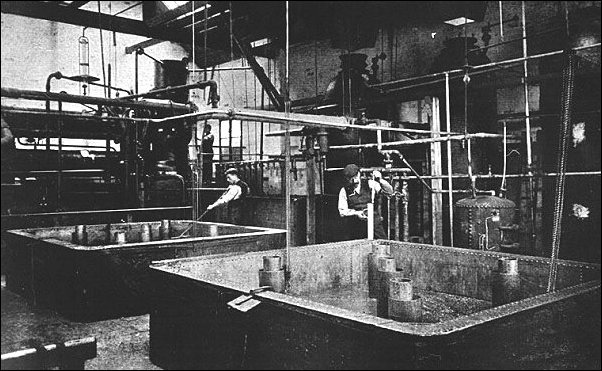|
Today
many glues are made from synthetics, but originally they were made
from natural sources. These included animal skin, bone and sinew,
plants and gums. Animal bones were boiled down to make glue which
was traditionally used in bookbinding.

İSCRAN/Edinburgh City Museums
JG Cox's Glue Works, Edinburgh, 1904
Glue
contains two groups of proteins: chondrin, which accounts for its
adhesive strength, and glutin, which contributes jelling strength.
Animal glue is a protein derived from the simple hydrolysis of collagen,
which is the principal protein constituent of animal hide, connective
tissue and bones. Collagen, animal glue, and gelatin are very closely
related in terms of protein and chemical composition.
Regardless
of the source of the protein, the glue manufacturing process consists
essentially of washing the stock, crushing or shredding the bones
or hides, soaking in a lime solution to eliminate hair and flesh,
boiling to extract the gelatinous material, gelling, and, finally,
drying. The resulting hard, brittle sheets of glue are then broken
into pieces or flakes, or ground into powder.
|